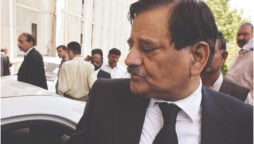Synopsis
The Three Lions' rise in international football is heavily credited to this strategy

England men’s football team’s qualification to World Cup semi-final and the recent Euro Cup final was no fluke or due to a magic wand.
There was a clear plan that was put in place which enabled England to perform at their best at the highest level. This plan, also known as the ‘England DNA’ blueprint is the core reason for the quality of players produced by their academies.
In 2014, Dan Ashworth, the English FA’s Director of Elite Development spearheaded the creation of a world-class approach to elite player development. The English FA had invested in a state-of-the-art training facility called St. George’s Park in 2012, spanning over 350 acres of land. This facility alone was not enough to propel England’s national teams to a new level.
The critical step was to also invite 1,500 licensed coaches over three days to pass on their blueprint for elite player development. This plan was formulated using research and consultations with the top coaches in the country.
They also drew inspiration from six European nations and three South American nations to ensure that their model could give them the best chance of producing world-beaters.
The goal was to get all the academies of clubs to follow the same plan and to develop a clearer understanding with clubs regarding their training methods. About 90% of the time, the England players of all age groups, spend their time with their own clubs. It is only 10% of the time that they are training at St. Georges Park or travelling for competition. Therefore, it was imperative for clubs and the country to be on the same page.
It is important to highlight the difference between a football philosophy and a football system. Football systems are related to the formation that the team will play i.e. 4-3-3, 4-4-2, 4-2-3-1, 3-4-3 etc.
Whereas, philosophy is related to the style of play and principles of play i.e. counter-attacking football, verticality in possession, penetration around defensive structures, possession-based football etc.
In an interview in 2014, Ashworth said, “We get hung up on ‘is it 4-3-3 or 4-4-2?’ No, it is a philosophy and principles of play.”
Ashworth describes the ‘England DNA’ as the ability to deal with the ball comfortably, the ability for them to press early when needed, the ability to be tactically flexible to be able to play against different systems.
The unpopular opinion is that although the likes of David Beckham, Frank Lampard, Paul Scholes, Gary Neville, Micheal Carrick (the list goes on) were phenomenal players and therefore dubbed as the ‘Golden Generation’, they were a different profile of players than what we see in the recent England squad.
If you compare the profile of players that featured in the final of the previous Euro Cup to the players in the ‘Golden Generation’ — there is one distinct difference that is a direct function of the ‘England DNA’ blueprint — the quality of flair and dribbling ability.
The likes of Raheem Sterling, Phil Foden, Mason Mount, Jack Grealish, Marcos Rashfod, Jadon Sancho – all possess the ability to dribble past players.
The element of flair is just one of the reasons that have elevated England to new heights. It is also a testament to the extensive long-term plan that was set out by the England Football Association in 2014.
The ‘Golden Generation’ fell short in international tournaments due to a variety of factors, luck, poor managerial appointments, injuries to key players etc. but I strongly believe that the players in the current England squad players possess a skill of flair and dribbling that has made them a much more formidable force on the world stage.
I am sure that most people reading this are unaware of the impact an ex-Hereford United player and manager has made on the system being played by most professional teams in Pakistan.
John Henry Layton was the coach of the Pakistan National Team between the years 1998 and 2002. At that time, the most prevalent formation being played in England was 4-4-2.
Layton was an advocate of this formation as well and therefore influenced local teams to mirror this system. Similarly, he believed in a ‘man-to-man’ style of defending, which also is a common principle that is used in most teams within Pakistan. Another distinct feature of his style of play or philosophy was an extremely direct approach with the ball, forcing his defenders to launch the ball forward to the strikers and then playing off of the second balls.
There is no surprise that a British coach in the early 2000s coached our national team to play this way because it was the way most teams in England and the English Premier League were playing.
The surprising fact is that until this day, most of the coaches and teams are still following those same archaic principles. In 2018, the Pakistan Football Federation announced the appointment of Brazilian coach, Jose Antonio Nogueira, as the new head coach.
His philosophy was a more progressive, possession-based style of play with a focus on building through the thirds and playing attractive attacking football. However, since he is no longer there — the national teams are constantly influx and lack continuity of a philosophy.
Pakistan football needs to improve in a variety of areas for the nation to achieve any sort of success on the international stage. One of the areas that need to be addressed is having a clear philosophy and blueprint of our own.
This document must detail the methods and principles that must be followed at youth clubs and academies, which will ultimately feed the National Team. This blueprint must be implemented at all the youth national team levels, by coaches that are aligned and adept to implement these practices.
For this, we need our very own director of elite development who can outline and detail this process. It is imperative that the literature is translated into languages that will cater to all ethnicities within Pakistan as well.
We often stress upon the lack and need for facilities, which is justified. However, we must remember that even if we build a St. George’s Park of our own, we must not turn a blind eye to the importance of our own ‘Pakistan DNA’ that will enable us to develop world-class players and teams.
Courtesy: Kareem Kerai
Catch all the Breaking News Event and Latest News Updates on The BOL News
Download The BOL News App to get the Daily News Update & Live News.












 Read the complete story text.
Read the complete story text. Listen to audio of the story.
Listen to audio of the story.